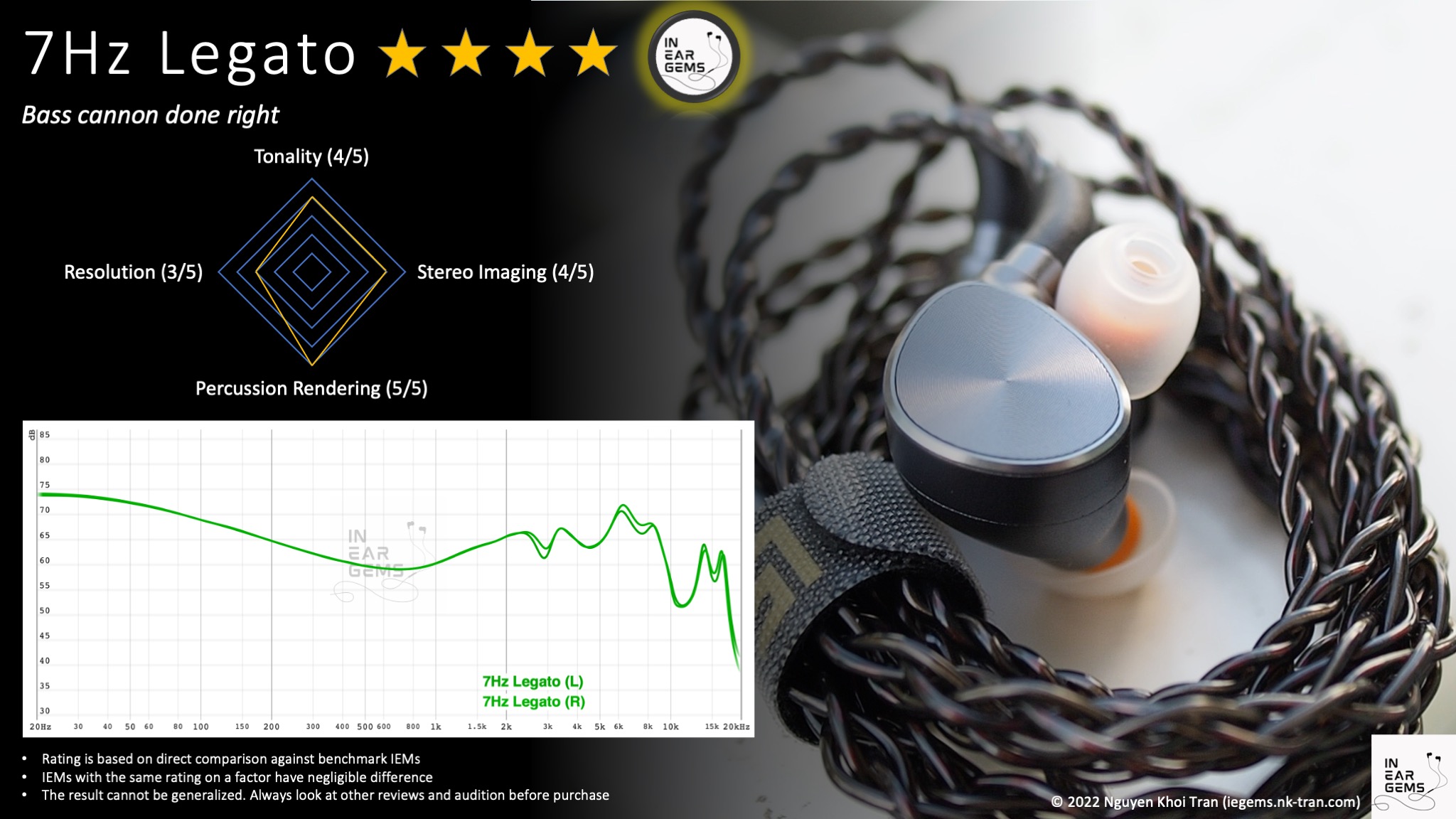7Hz Legato - Proper bass cannon
A good pair of bassy IEMs is surprisingly rare. When a manufacturer claims that their IEM is bassy, they usually make the IEM too muddy. Alternatively, they would be afraid of the mud to the point of removing all the punchiness from the bass, leaving behind only sub-bass hum.
Today, we look at the 7Hz Legato, an IEM that promises to do a bassy signature properly.
Forewords
- My review aims to tell you where an IEM is within a consistent and simple scale from 1 (poor) to 5 (outstanding). Scores are assigned by A/B tests against benchmark IEMs, regardless of the retail price.
- I focus on the poorly-defined yet important “technical performance”, such as resolution, soundstage, and imaging.
- Ranking list and measurement database are on my IEM review blog.
- This review is based on a review sample from Linsoul (Thank you!). I have no affiliation with or financial interest in Linsoul or 7Hz. The unit retails for USD$109 at the time this review was published. You can find out more info and get yourself a unit from the Linsoul store.
Specs
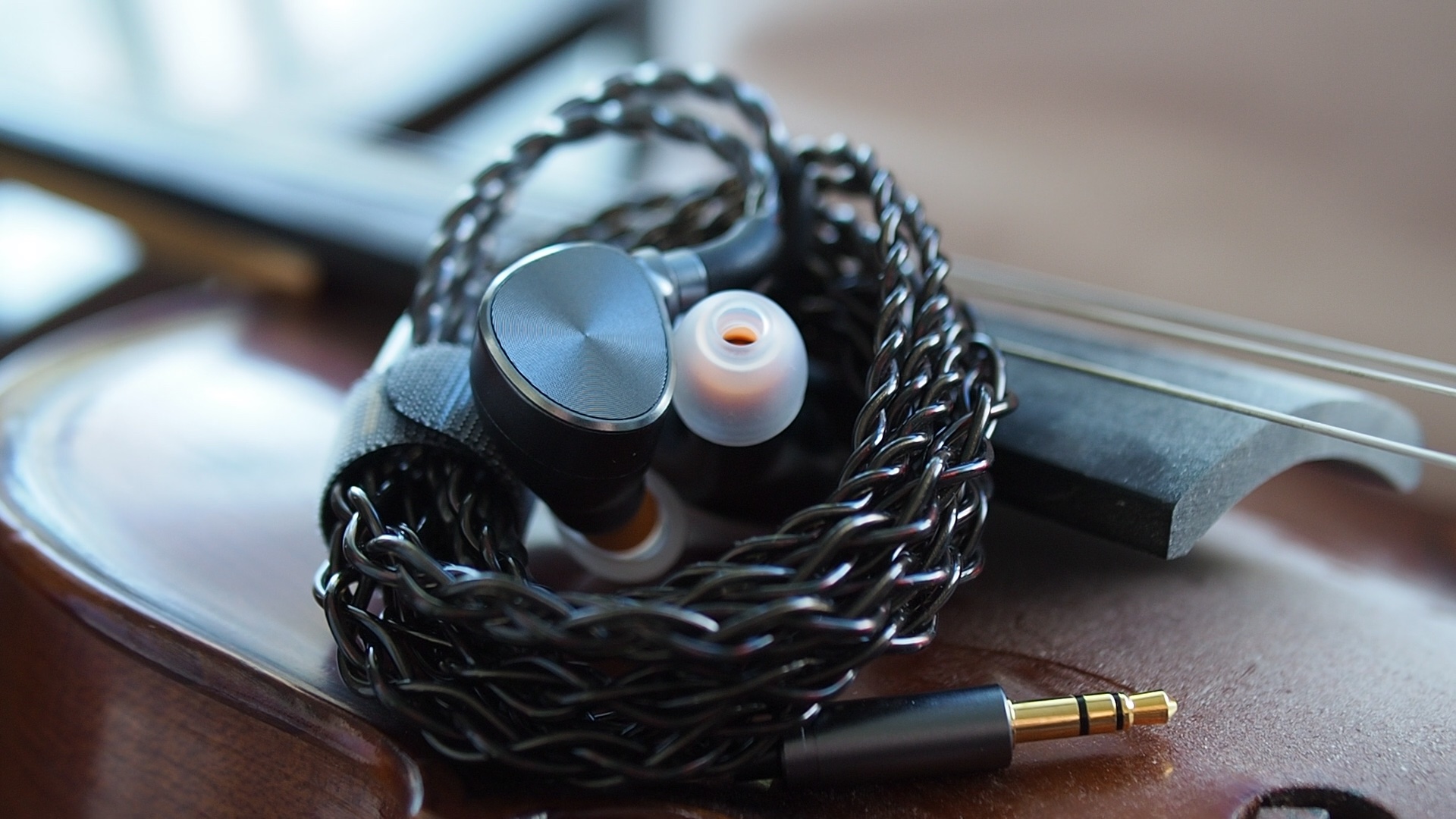
- Driver: 12mm DD + 6mm DD
- Connector Type: 0.78mm 2-pin
- Impedance: 26ohm @ 1kHz
- Sensitivity: 108dB/mV@1kHz
Non-sound Aspects
The Legato comes in very effective and efficient packaging with zero waste if you decide to keep the cardboard box around for decoration.
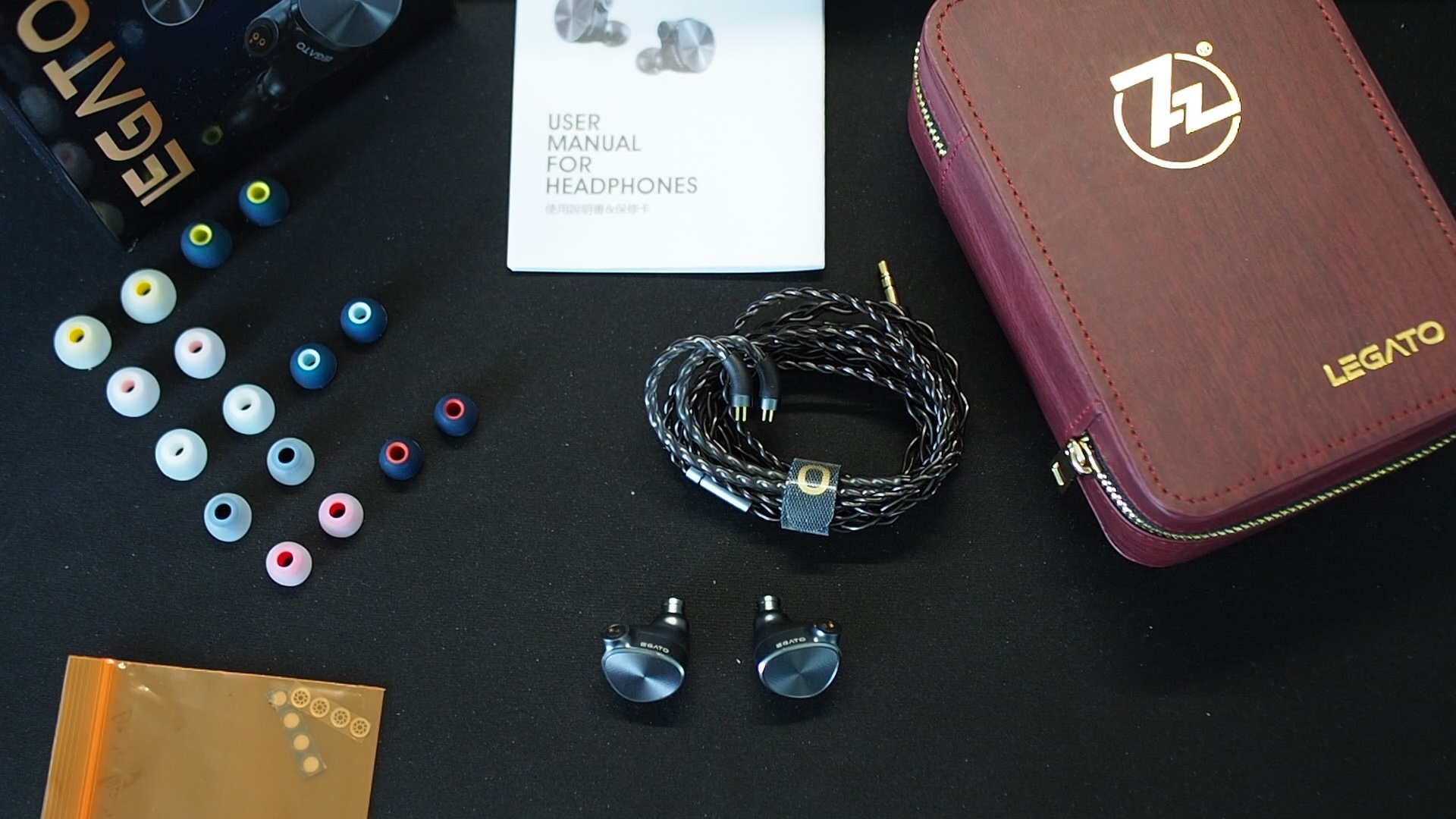
Inside the cardboard box, you find a giant case carrying all the goodies. You have two types of ear tips with various sizes, replacement dust filters for the nozzles, a single-ended braided cable, a user manual, and the ear pieces themselves.
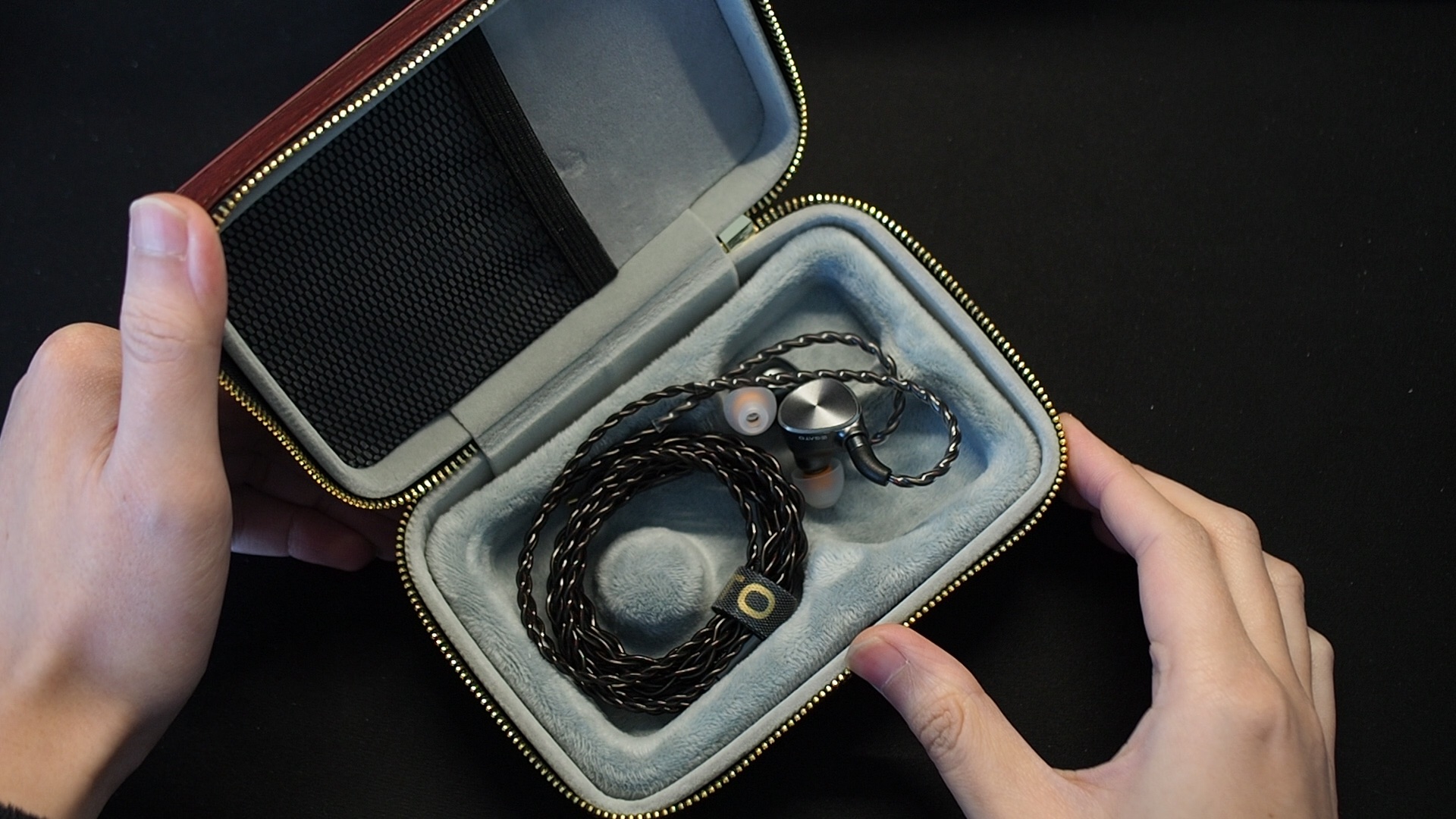
The case is gigantic. It is lined with a soft insert that can be removed to further increase the storage size. I can store a few pairs of IEMs or an IEM and a thin source, such as the Topping G5. I can also store two medium-sized music players (DAP). However, I couldn’t keep a thick DAP, such as my Shanling M6 Ultra and an IEM. So I hope that 7Hz can make the case even a bit thicker in the future.

The stock cable supplied by 7Hz does not look fancy, but it is one of the most well-behaved stock cables I have seen so far. Soft, comfortable, easy to handle, and no microphonic. It’s a shame that the cable terminates with a 3.5mm plug, and there is no option to get it with a 4.4mm termination.
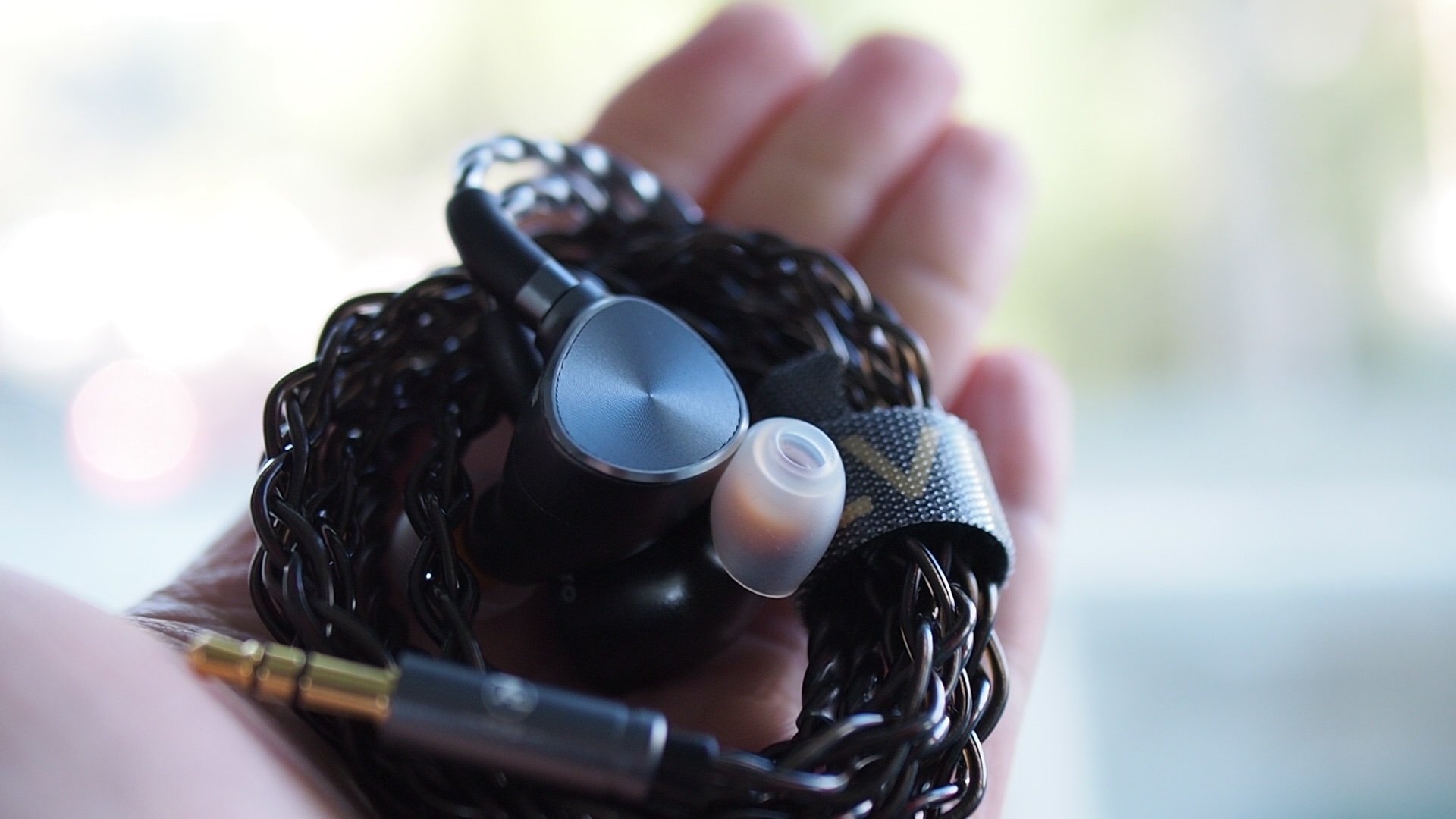
The earpieces are fully metal. Their shape, internal acoustic structure, and faceplate decoration strongly remind me of the legendary Sony IER-Z1R. Luckily, Legato is smaller and more comfortable than Sony’s ear stretchers.
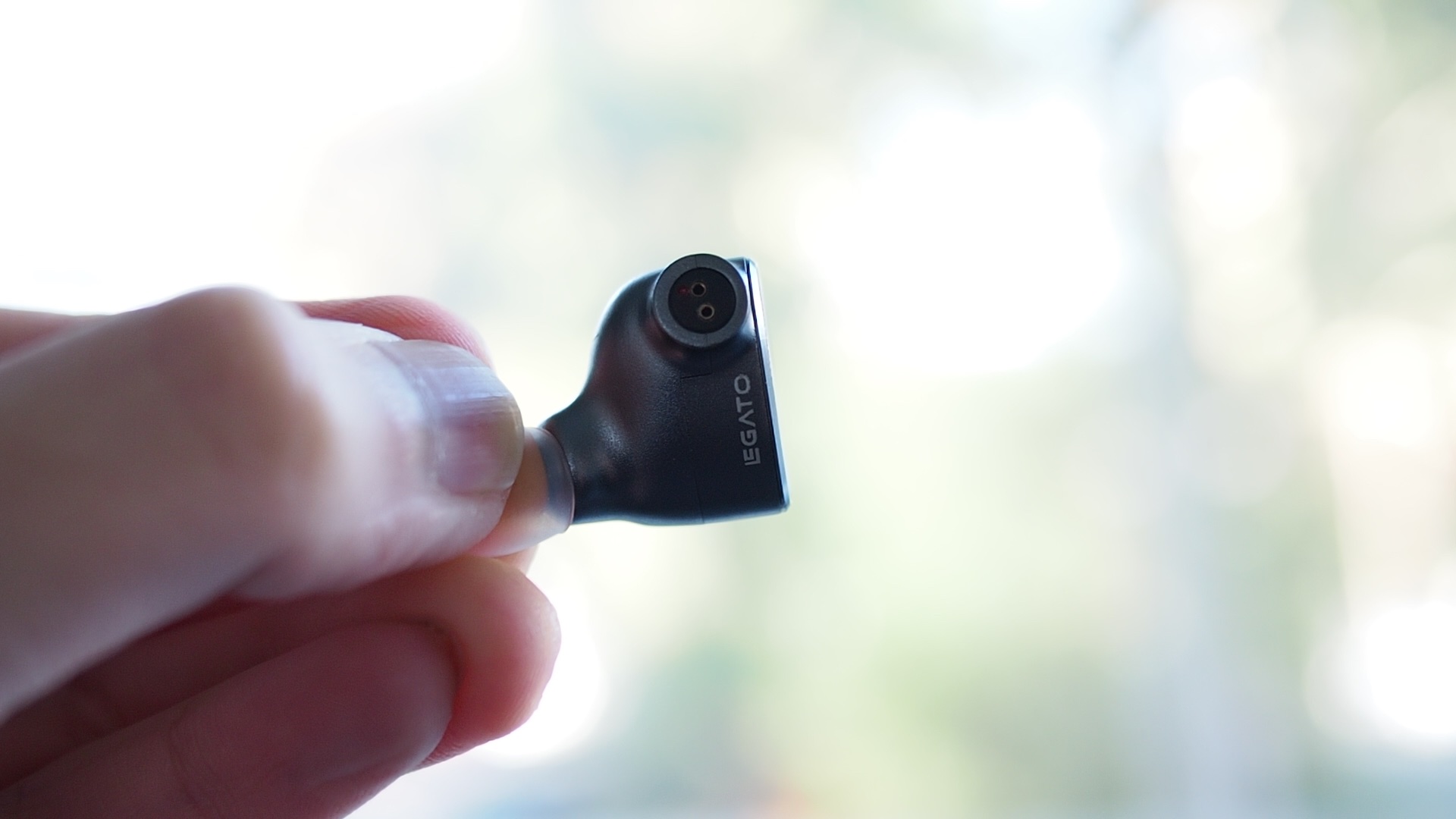
Legato earpieces are medium-sized, but they are pretty thick. Even though the nozzles look bulky and long, the part that goes into your ear canals is relatively short. The rest of the nozzles actually hold the 6mm dynamic drivers. Due to the design, Legato is not supposed to sit flush against your ears unless you have gigantic ear canals to insert the 6mm driver inside. 7Hz has anticipated this issue and designed the 2-pin connectors to angle the cable toward your head, preventing the ear hooks from popping out from the back of your ears.
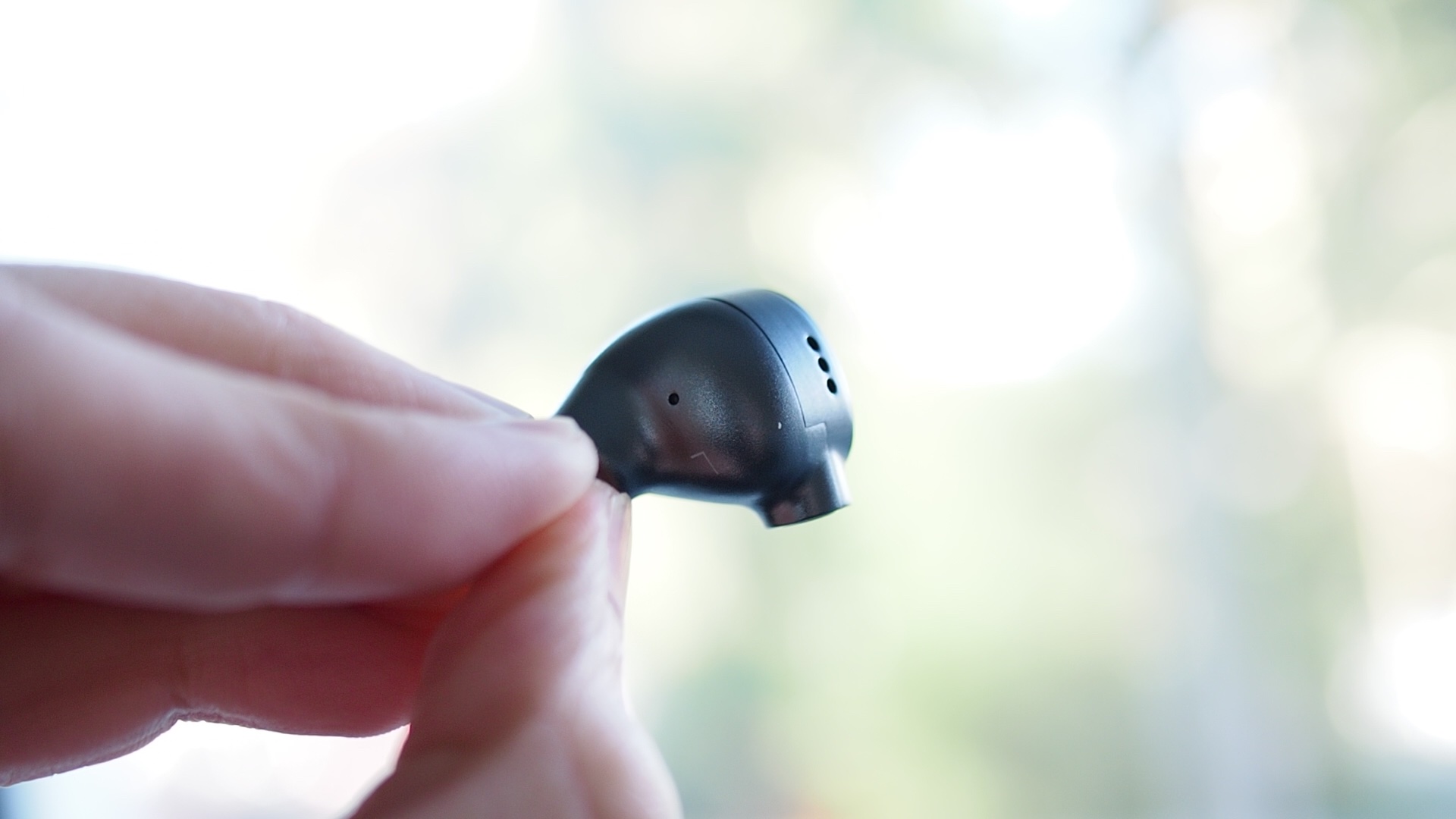
Due to the generous amount of venting and shallow insertion, the noise isolation of the Legato is below average. When I was out, I needed to turn the volume up a few notches.
The comfort of the Legato depends a great deal on the ear tips that you use. The stock ear tips are too stiff and do not work well with a shallow fit. I found that Spin Fit CP145 and W1 are good options. The HS18 tips from FiiO are another excellent option, especially if you want to reduce the lower midrange.
How it sounds
Sources for listening tests:
- Fiio K7 (for all A/B tests)
- Shanling M6 Ultra
- HiBy RS6
- Topping G5
- Hidizs S9 Pro
Local FLAC files ripped from CDs or bought from Qobuz were used for most casual listening and A/B tests. My playlist for A/B tests can be found on Apple Music here.
All of my listening was done with Spin Fit CP145 ear tips. I listen at a medium volume. I usually turn up the volume until the midrange is entirely audible and detailed unless a treble peak or overwhelming bass prevents me from doing so.
Tonality and Timbre: 4/5 - Good
Frequency response of 7Hz Legato. Measurements were done with an IEC-711-compliant coupler and might only be compared with other measurements from this same coupler. Visit my graph database for more comparisons.

Tonality or “tuning” is where objectivity and subjectivity meet. Objectivity exists in the squiggly lines above, called Frequency Response (FR) graphs. They are created by sweeping a signal from 20Hz to 20kHz and measuring the corresponding loudness coming from an IEM. Unless a human operator deliberately tampers with the microphone or the data, FR does not care about the price or prestige of an IEM and, therefore, is “objective.”
However, human listeners are not microphones. Our ears and brain interpret the sound and decide whether it is “enjoyable.” It is also beneficial to remember that when you play a note on a musical instrument, multiple sounds (fundamental and harmonic) appear simultaneously and mix together. Achieving a life-like balance between frequencies and adding a tasteful amount of imbalance (“colouring the sound”) is the hallmark of an excellent tonality.
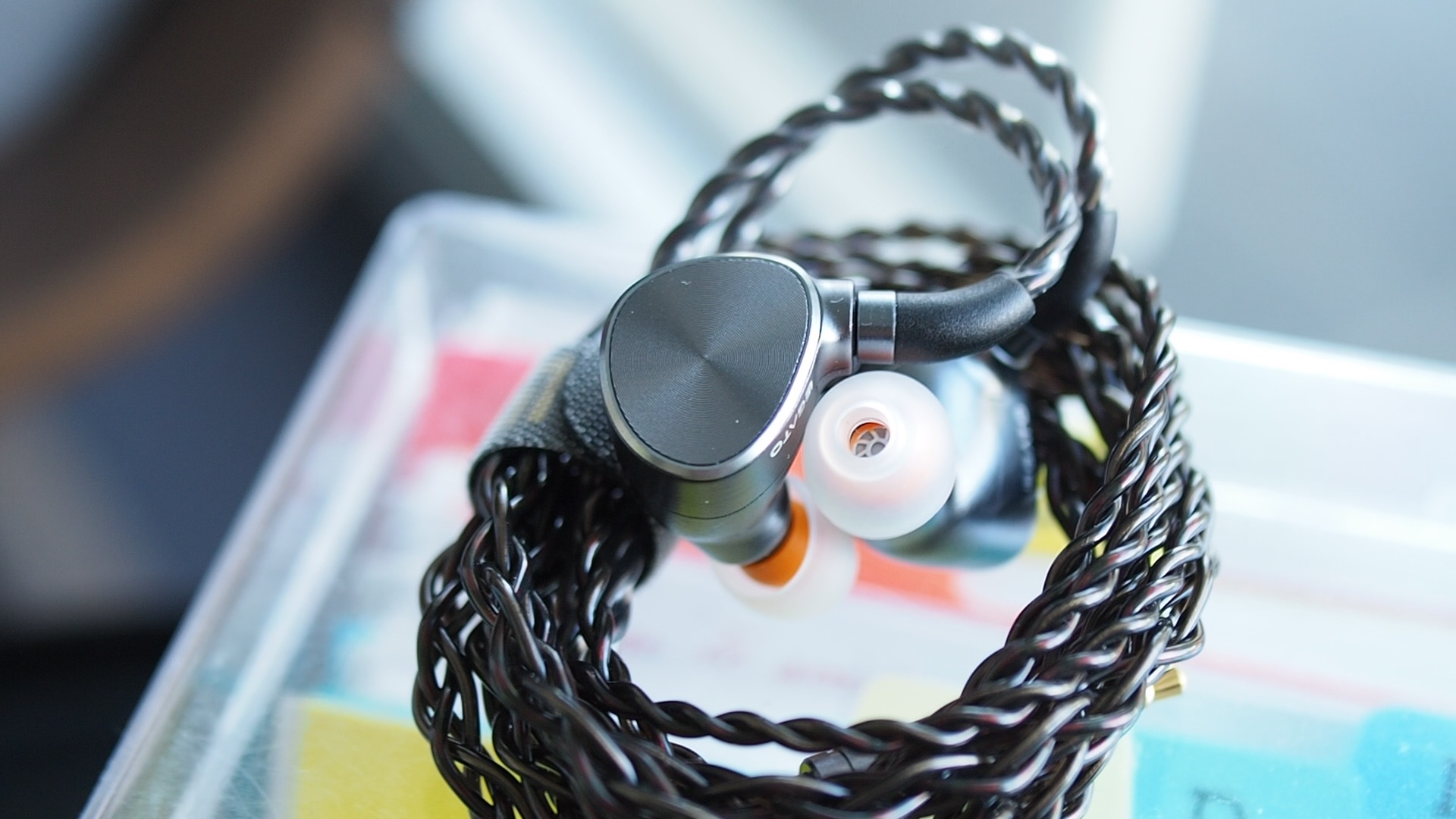
The overall tuning of the Legato can be described as an “L-shape” or even a “downward slope.” You have an overwhelming amount of bass and roughly the same level of midrange and treble.
We need to discuss a bit more about the bass region of Legato. If we had talked about the Legato when I received the unit, you would remember my complaint that the Legato is not that bassy. Let me clarify: the Legato is very bassy but properly bassy. The way 7Hz approaches the bass differs from consumer “extra-bass” products with a bloated and muddy sound for the sake of “boom boom.”

No, most of the Legato’s bass energy is focused in the true bass region, below 150Hz. Moreover, the bass is carried by a (seemingly) high-quality dynamic driver. As a result, Legato has a proper bass boost, making it incredibly punchy and physical. When I listen to bassy music (think the bass line of Despacito), I feel the bass can shake my head right off.
Because the bass energy is focused in the proper bass region, Legato’s bass can take a step back when unnecessary. For instance, when I listen to non-bassy music such as Mozart’s string quintets, I don’t feel that the bass invades and destroys the music, even though cellos can sound louder than you listen with Aria or Blessing 2. Thanks to the bass, non-bassy music sounds more weighty, as if there is tactile feedback with every pluck and tap from the cellos.
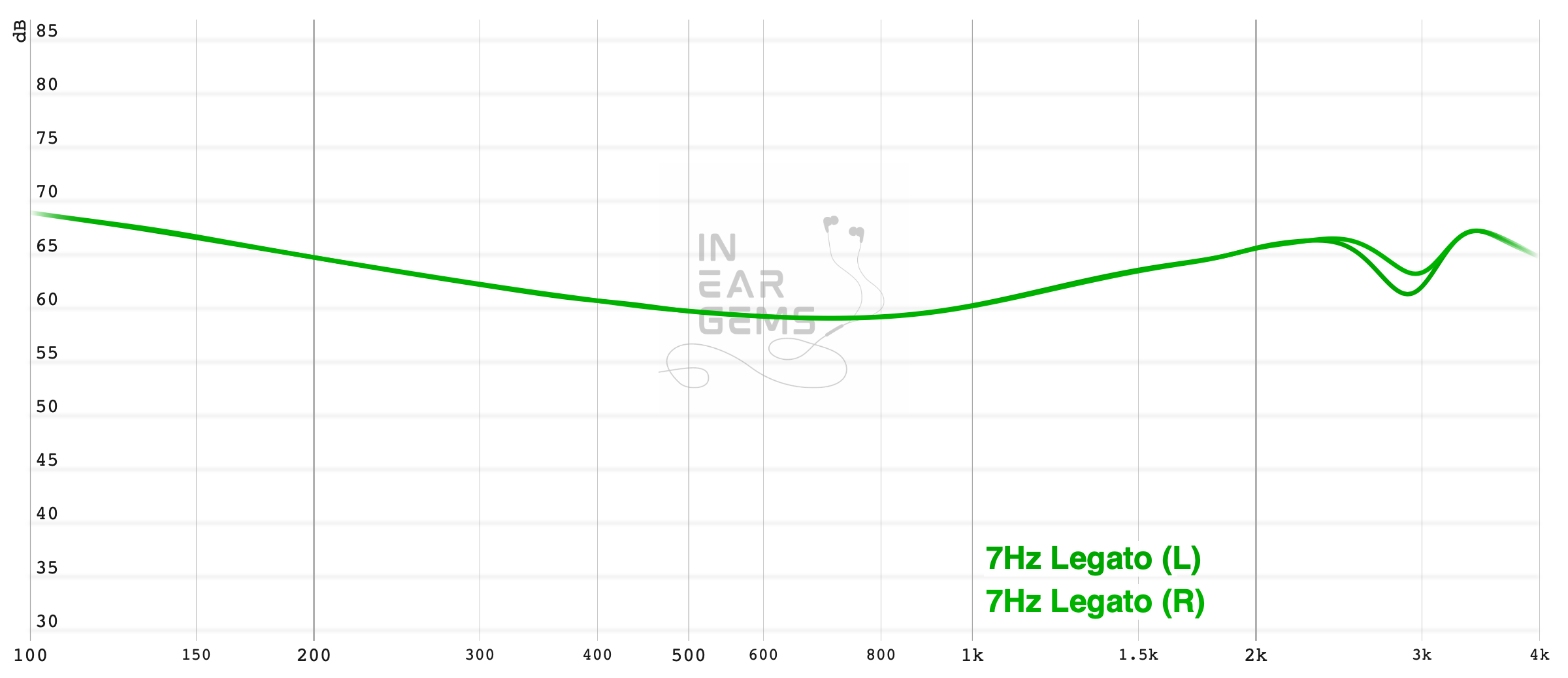
The transition from bass to midrange is smooth. It means that there is a sense of warmth, or “bass bleed.” The graph shows this warmth with the 5dB boost above neutral at around 250Hz. It makes vocals a bit thicker and warmer (dare I say more “musical”?). At the same time, the midrange still sounds surprisingly linear and open, thanks to the flat response between 500Hz and 1kHz. The net result is a natural and enjoyable midrange that works well in instrumental and vocal music. For instance, I enjoy listening to Father and Son from The Tea for the Tillerman by Cat Stevens.
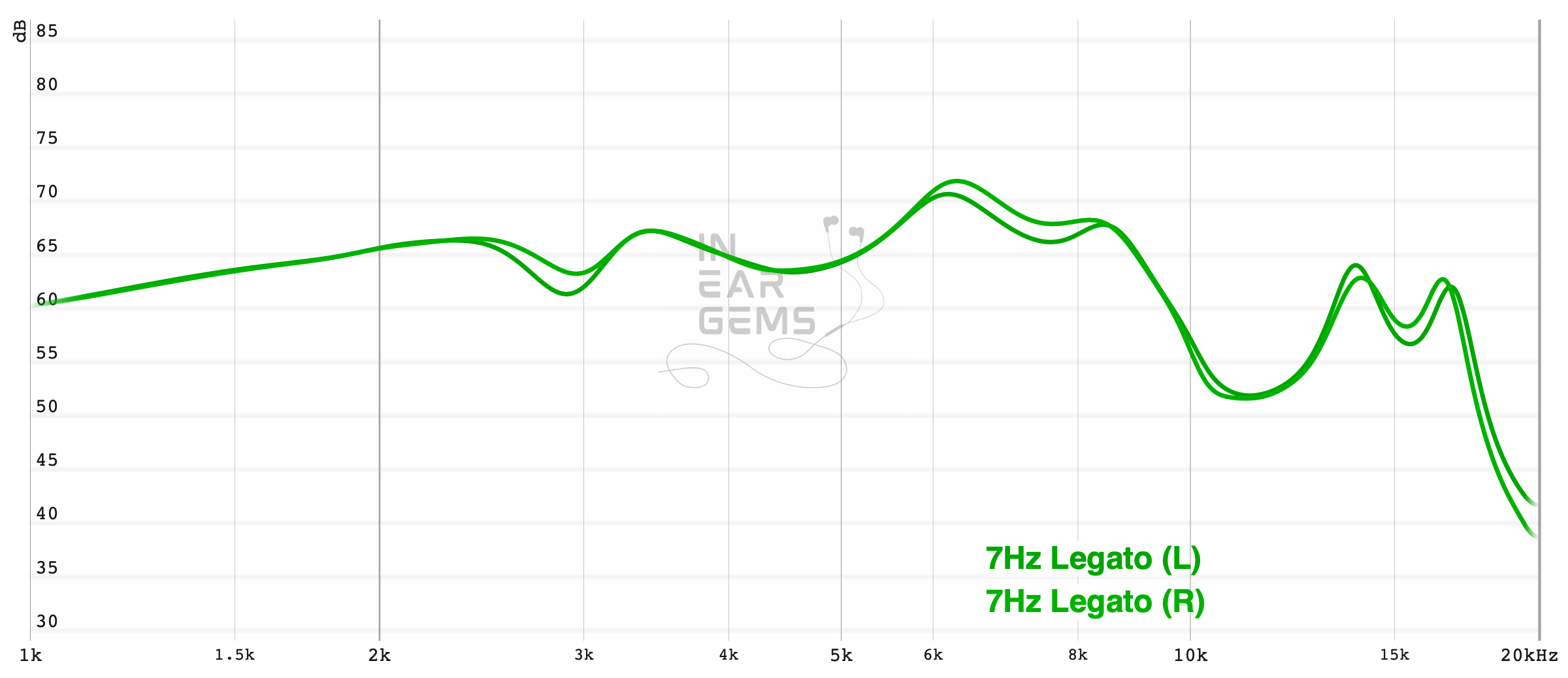
The upper midrange of Legato is laidback, evident by the gentle ear gain of only 7.5dB above neutral rather than the full 12dB of the Harman target. I found the upper midrange right for me because it gives instruments and female vocals enough presence and brightness without making them shouty. Another benefit of this laidback midrange is the illusion of soundstage depth, which I will discuss later.
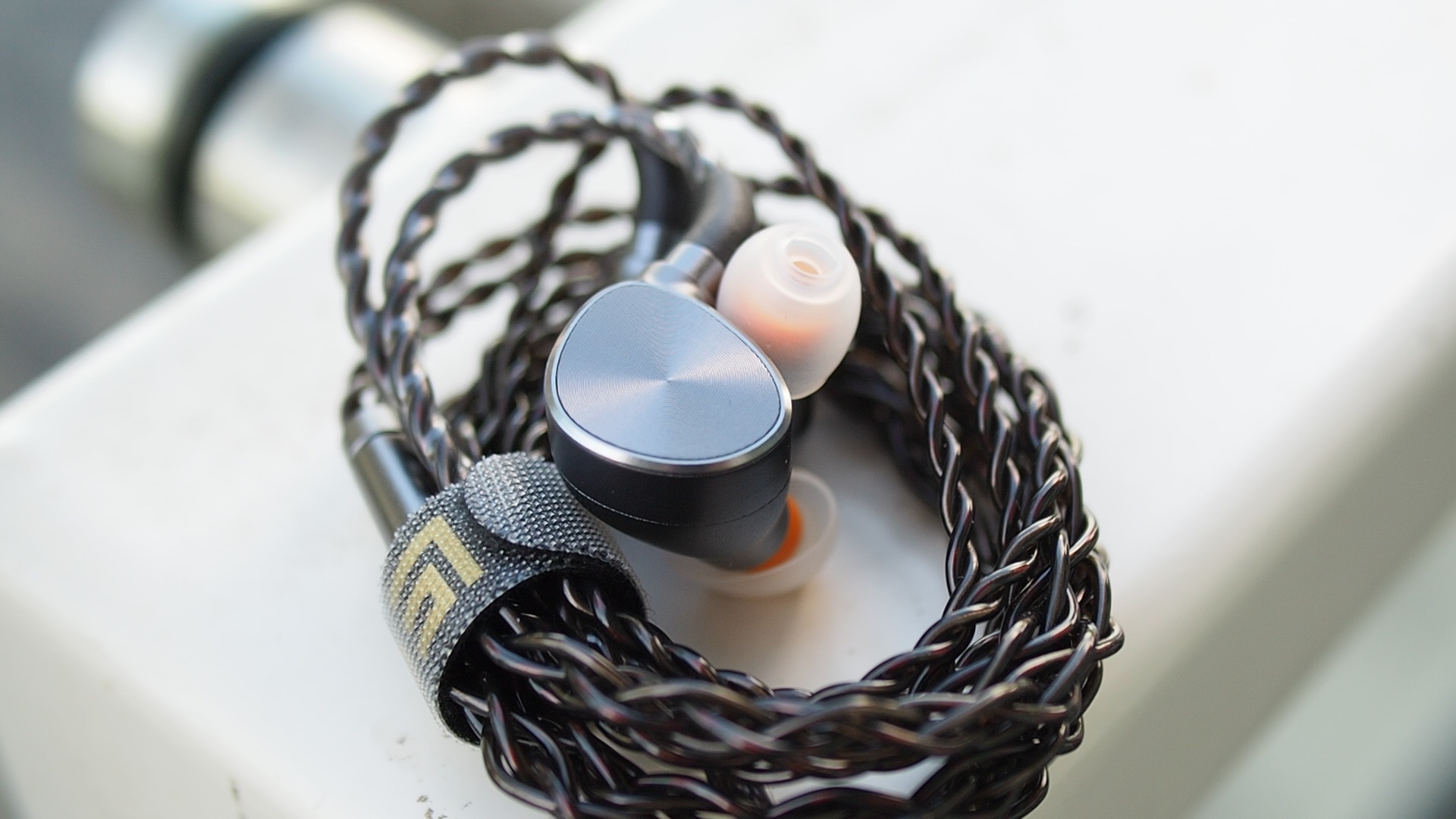
The treble region of Legato is not emphasised but still has a good presence. The treble response of Legato is characterised by the strong peak around 6kHz. This peak works with the sub-bass to bring that snappy and tactile sensation to drum hits and string plucks. The 8kHz is not pushed, so cymbals and hi-hats are not splashy nor too bright, making it easier to hear details in these instruments. Finally, the 15kHz region maintains a good energy level to create a sense of air, room reverberation and decay.
Wanted Dead or Alive by Bon Jovi is a good song to showcase the treble response of Legato. The airy and 3D opening of the song is reproduced nicely by Legato. If I focus, I can pull out more details from cymbals and hi-hats. However, at a glance, these high-pitched instruments are not very emphasised, and you can miss them if you don’t pay attention. Depending on your treble tolerance, this muted response is either a pro or a con.
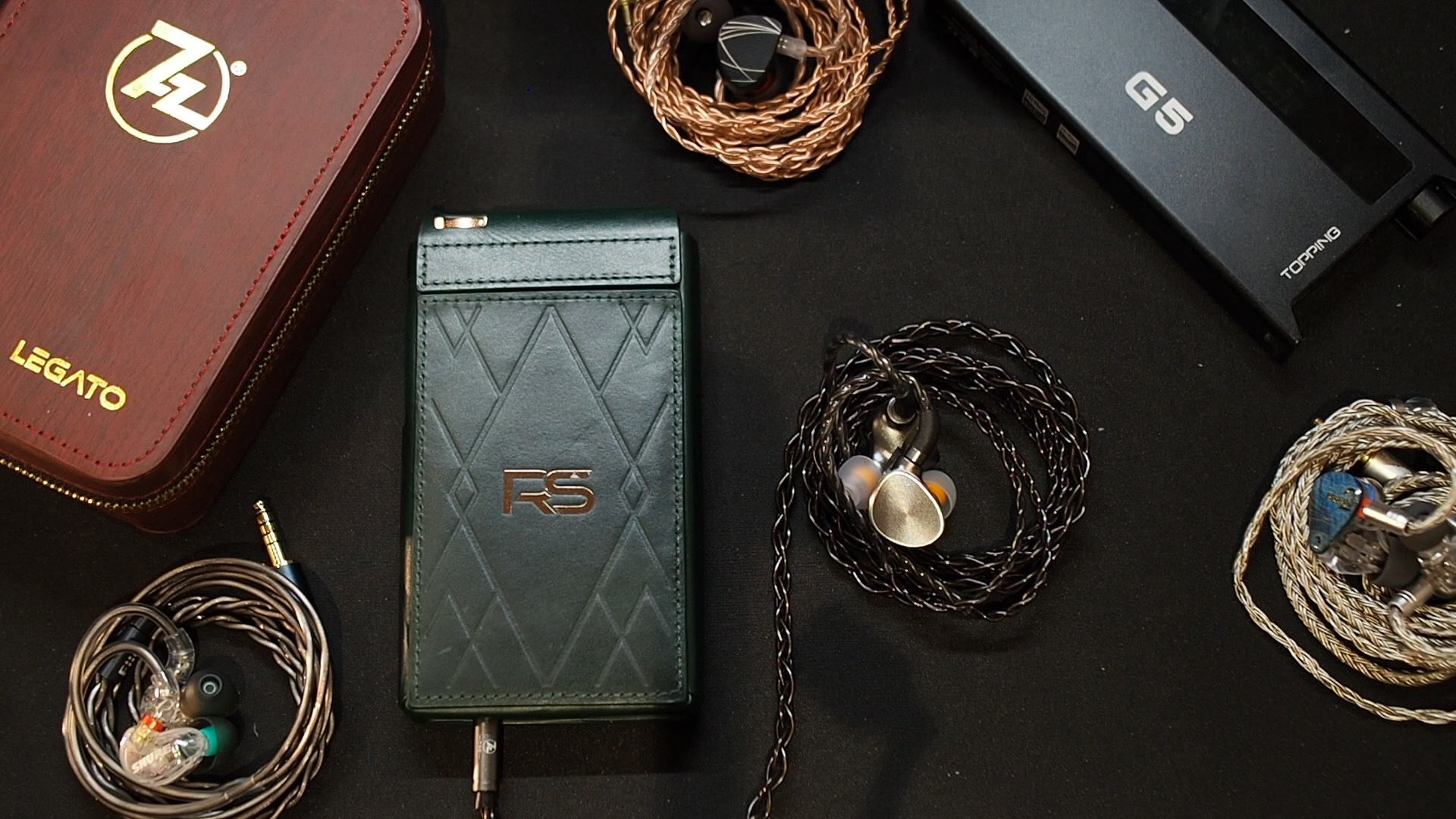
In summary, I find that 7Hz has tuned the Legato with a clear vision and produced a sound signature that is both unique and pleasant. However, I do find that the lower midrange is a bit too high for some recordings. It introduces a degree of imbalance to the overall perception of loudness that forces me to change the volume frequently when I shuffle through my playlists. I’m not advocating a ruler-flat lower midrange, but 2 or 3dB less around 250Hz rather than 5dB would be better. I also think a little extra treble quantity to highlight cymbals and hi-hats, just a touch more, would be perfect. 4/5 - Good.
Resolution, Detail, Separation: 3/5 - Average

Resolution is a fascinating subject due to the difficulty of pinning down what it really is. To me, “resolution” can be broken down into three components:
- Sharpness, incisiveness, or “definition” of note attacks (see the figure above).
- The separation of instruments and vocals, especially when they overlap on the soundstage.
- The texture and details in the decay side of the notes.
The first two give music clarity and make it easy to track individual elements of a mix. The last provides music details and nuances. Generally, a smooth frequency response and good drivers give the best resolution.

Resolution is, unfortunately, not a strength of the Legato. At the same time, it is adequate.
The Legato does not have tack-sharp note definition and instrument separation, so tracking individual instruments in fast and busy music would take more effort, such as the Presto movement of Summer or G.O.A.T. by Polyphia. At the same time, the Legato can still convey noticeable boundaries between notes. The wide soundstage of Legato also helps with the separation by pushing instruments further from each other. Therefore, regarding the separation and clarity, I would say the Legato is around Moondrop Aria level, noticeably above Shure SE215 and below Moondrop Blessing 2.

The detail retrieval of Legato is also average. For instance, I can hear major details when I listen to a detail-rich recording such as the Flute Partita in A Minor. Still, I always feel that the music is slightly too smooth, as if a layer of information is nearly there but not yet. This “veil” is lifted when I move to Aria or Blessing.
In summary, the Legato provides adequate separation and clarity to enjoy some complex recordings. However, it is not a good choice if you want to sit down and pay much attention to micro details and nuances. 3/5 - Average.
Percussion Rendering: 5/5 - Excellent
Percussion rendering reflects how well the tuning and technical performance of an IEM work together to recreate realistic sound of a drum set. Good drum hits have a crisp attack (controlled by frequencies from 4kHz to 6kHz), full body (midbass frequencies around 200Hz), and physical sensation (sub-bass frequencies around 50Hz). Good technical performance (“fast” driver) ensures that bass notes can be loud yet detailed. IEMs that cannot control bass very well tend to reduce the bass’ loudness to prevent muddiness.
The bass response of Legato is simply excellent. It is much cleaner than what I expected. Bass attacks are clear, snappy, loud and physical. There are solid rumbles and resonance on the decay side of bass notes.
For instance, every kick in the iconic opening of Hotel California (live 1994 version) have a snappy attack with an unmistakable punch sensation at the top. The kicks hang around the stage just a touch longer to create a sense of rumble and resonance across the soundstage. When the bass guitar comes in, it does not get mixed up with the kick, allowing me to follow the bass line.

However, Legato’s lower frequency loses crispness and control when the music gets busy. For instance, around 2:00 of Skyrim’s main theme, Dragonborn, the clarity and separation of the bass region are greatly reduced to hums and rumbles rather than precise attacks.
Still, the Legato maintains remarkable control over its large amount of bass. The bass is generally snappy and rarely overstays its welcome. 5/5 - Excellent.
Stereo Imaging (Soundstage): 4/5 - Good

Stereo imaging or “soundstage” is a psychoacoustic illusion that different recording elements appear at various locations inside and around your head. Your brain creates based on the cues in the recording, which are enhanced or diminished by your IEMs, your DAC, and your amplifier. Some IEMs present a wide but flat soundstage. Some present a “3D” soundstage with layering, depth, and height. In rare cases, with some specific songs, some IEMs can trick you into thinking that the sound comes from the environment (a.k.a., “holographic”)
The Legato presents a large and deep soundstage with most of my music. The width is likely due to the shallow fit of these IEMs. The soundstage also feels open, thanks to the generous venting on the earpieces.
For instance, when I listen to Hotel California, I can hear the kick drum right in the middle of the stage, whilst all other instruments spread out away from the centre and from each other. The sense of distance between layers on the soundstage is more robust than both the Aria and the Blessing 2. Thanks to the laid-back upper midrange, the whole soundstage is also pulled back from my head, further intensifying the illusion of depth.
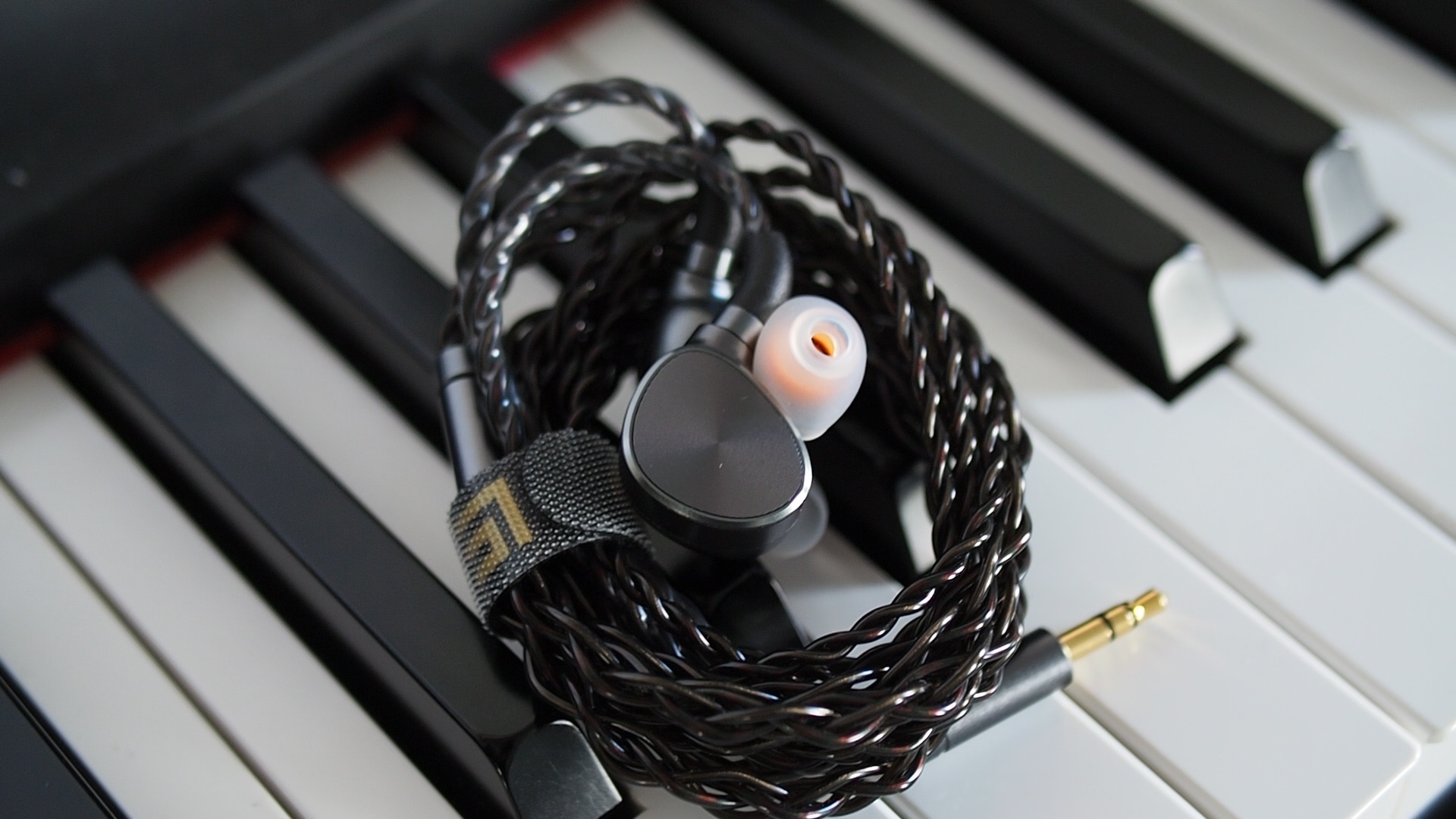
The weakness of Legato’s soundstage imaging is the precision and clarity of the stereo image. Simply put, the Legato does not sound tack sharp or pinpoint. Musical instruments seem to exist in vague areas on the soundstage rather than a precise point.
Still, I find the soundstage imaging a bright spot of the Legato, enabling its bass-heavy tuning to work. 4/5 - Good.
Source Pairing
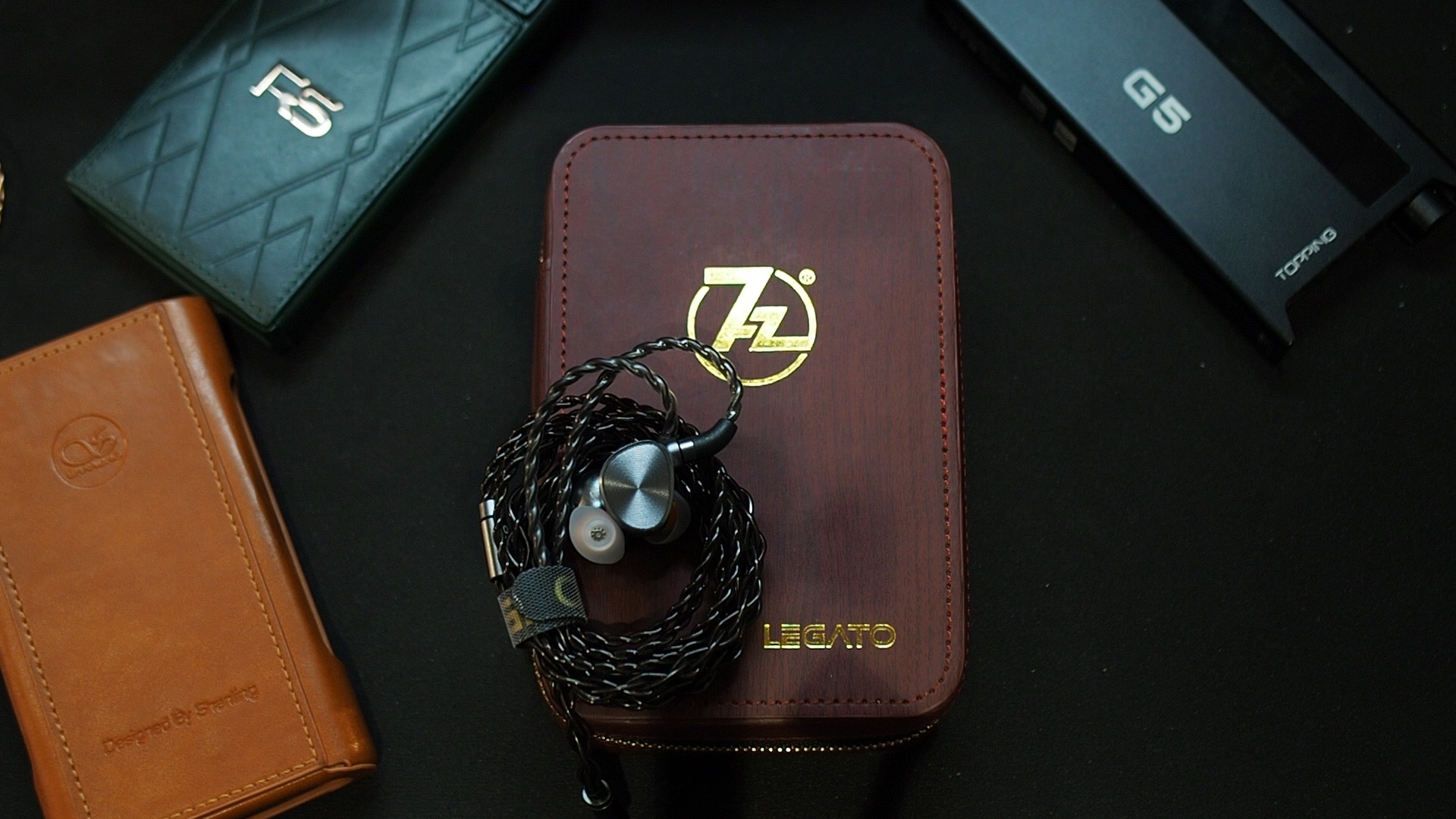
Legato is an easy-to-drive IEM. You don’t need ultra high-end DAP or desktop amplifier to get the most of these IEMs. However, if you choose an audio source that tends to reduce the soundstage size and details, your listening experience would likely be negatively impacted, as the Legato can sound overly warm and congested. I personally enjoy pairing Legato with a clean source like Topping G5. A warm and rich source like HiBy RS6 does not always work with Legato.
Some Comparisons
In this section, I compare Legato with some relevant IEMs. You can use my ranking list to compare Legato with others. Due to how I rank IEMs, if two IEMs score the same, they perform more or less similarly.
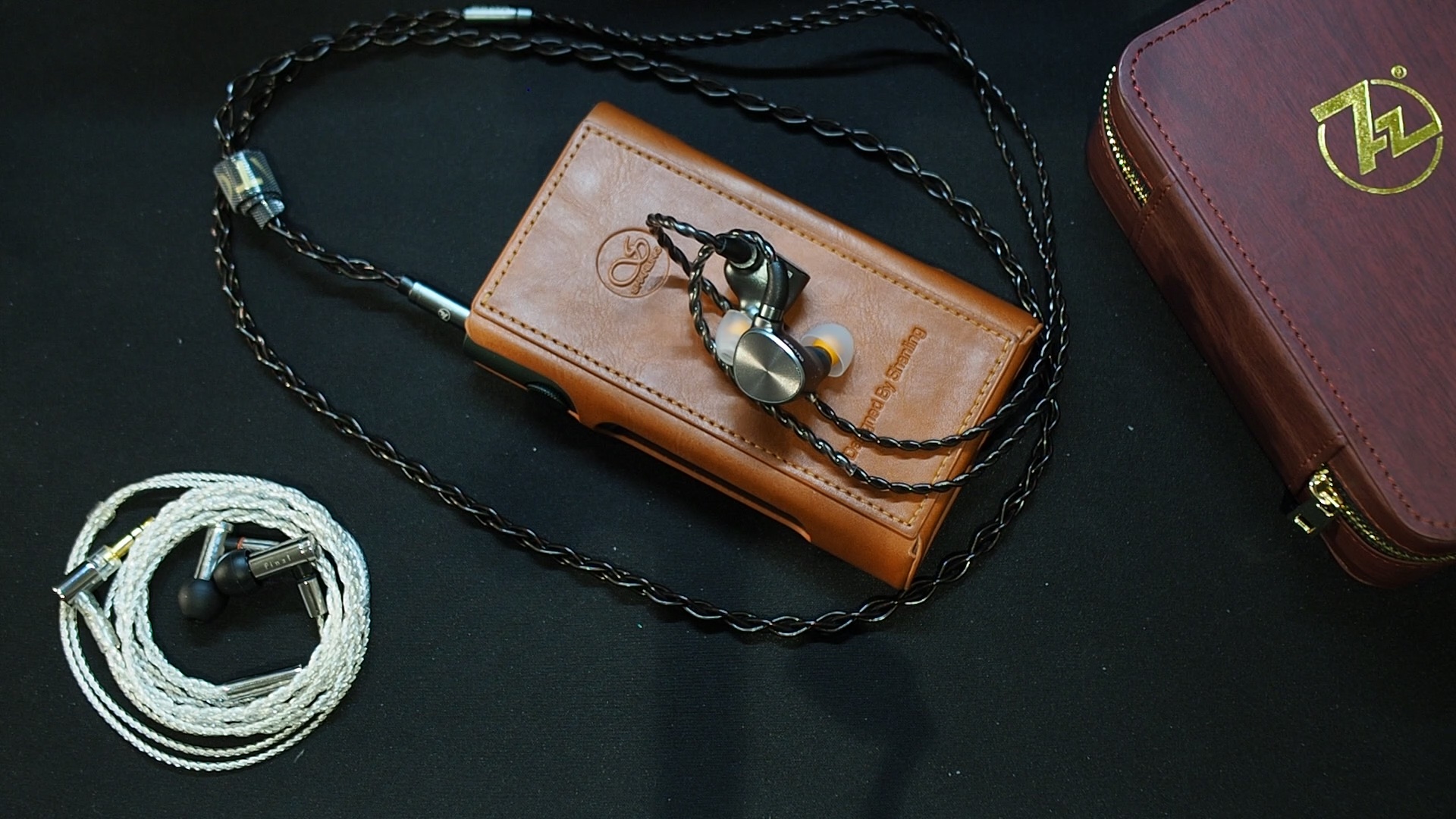
I have been searching for a replacement for the (in)famous Final Audio E5000 as a mid-fi basshead IEM.
The main problem with the E5000 is that it demands a lot from amplifiers, despite its small and unassuming shape. For instance, it even sounds different between the low-gain and high-gain settings of my Fiio K7. When not powered properly, these IEMs sound muffled, muddy, with “slow” bass. When adequately powered, the bass tucks into the sub-bass, the midrange clears up, the treble details come through, and the soundstage expands, creating a pleasant presentation. Most listeners wanting a basshead IEM would not have that kind of setup to enjoy these niche IEMs.
The Legato fills in the gap perfectly. It is way easier to drive than the E5000. It’s more affordable. It’s even bassier. It’s more transparent and less muffled. And you don’t have to worry about the QA lottery of the Final E series.
Conclusion
The Legato is a particular pair of IEMs. 7Hz approached the Legato with a vision and carried out that vision with care and finesse. Suppose 7Hz can improve the midrange resolution of these IEMs further. In that case, I think the revision of the Legato could be an excellent IEM and a possible spiritual successor of the legendary Z1R.
Who is Legato for? I would recommend the Legato to beginners and casual listeners who look an improvement upon the usual consumer sound. These IEMs would also be an interesting addition to the collection of seasoned audio geeks. High recommendation.
Pros:
- Unique and pleasant sound signature
- Properly done bass cannon
- Large, deep, and open soundstage
- Good accessories
Cons:
- Average detail retrieval
- Average clarity and precision of stereo images
